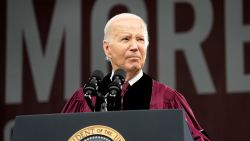Cities, colleges and even the US Capitol are seeing growing battles over statues or building names after the killing of George Floyd.
The University of Mississippi is facing a fight over its very identity.
Like other universities, the state’s flagship campus in Oxford is not generally addressed by its full name. For more than a century, it’s been called Ole Miss. It sounds like folksy shorthand for Old Mississippi.
The term’s actual origin is more unsettling.
In 1896, a fraternity-backed council asked students to name the new school yearbook. Student Elma Meek proffered Ole Miss.
She borrowed it from the vernacular of the antebellum “darkey,” who used it as a term of reverence for the slave master’s wife, Meek told the university newspaper in 1937.
The story, which explains how the term became “the valued possession” of the university at large, ran under the headline: “Ole Miss takes its name from darky dialect, not abbreviation of state.”
Plenty of students and alum say the name has evolved to embody all that’s good about the northwest Mississippi school and its traditions. Others – including many Black students, who make up 12.5% of the student body in a state where African Americans compose triple that percentage of the population – point to Meek’s words and ask: How could Ole Miss mean something else?
“I had often heard old ‘darkies’ on Southern plantations address the lady in the ‘big house’ as ‘Ole Miss,’” Meek told the school paper 40 years after the term’s advent. “I have never thought much about the matter, for I never dreamed, of course, that the term would grow into such popularity and favor.”
She felt the term was a tribute to Southern women, the paper reported.
‘We will continue to use the terms’
To be clear, this isn’t breaking news. The Ole Miss origin story is an open secret. Two sources, with something less than conviction, offered an alternate theory – about a train that ran from Memphis to New Orleans – but the tale doesn’t withstand academic or journalistic rigor.
On its own website, the university explains Elma Meek Hall, which houses the art department, is named for “the student who submitted the name Ole Miss for the name of the annual yearbook; Ole Miss subsequently became synonymous with the University of Mississippi.” A cached version of a 2013 university yearbook webpage also credits Meek.
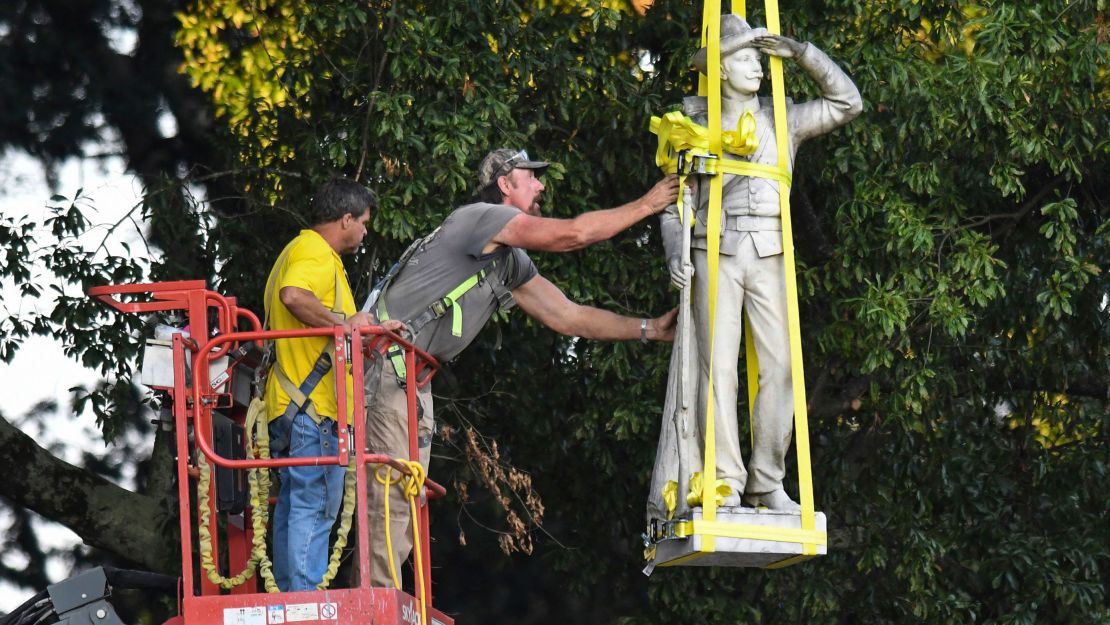
The university declined CNN’s requests to discuss the matter with the chancellor or provost, saying, “Our leadership is absorbed with Covid-19 planning as we prepare to resume on-campus operations safely.”
In 2016, then-Chancellor Jeffrey Vitter tamped down concern about the university retiring Ole Miss or its mascot, the Rebels, saying the university would continue to use them because they’re popular and have taken on new meanings. A Rebel was no longer a Confederate; she or he was now “someone who bucks the status quo,” he wrote.
“I can assure you that we will continue to use the terms Ole Miss and Rebels as endearing nicknames for the university,” Vitter wrote.
UM has been here before
The Battle of Ole Miss hasn’t materialized with the same intensity as fights over Robert E. Lee statues, but on a campus with so many remnants of the Confederacy in an era of increasing intolerance for the tributes, it could be next. Traditionalists have been steeling themselves for it, gathering on social media to preemptively defend Ole Miss’ honor.
They see what’s happened across the nation since Floyd’s death. His killing ignited a simmering movement to redefine the legacies of Confederates and other historic figures – and statues have dropped like bowling pins since.
Tributes to Robert E. Lee, Stonewall Jackson and Jefferson Davis have already fallen. Military bases with Confederate namesakes, such as Fort Benning and Fort Bragg, are in the crosshairs. Vice President John Calhoun’s name was stripped from buildings Clemson. His statue fell in Charleston. Princeton nixed President Woodrow Wilson. In some instances, protesters have pulled the tributes down themselves.
To understand the coming conflagration, know the University of Mississippi has been in a state of war over ideas for more than two decades. Its 1997 “stick ban” was viewed as a slick way of getting Confederate flags out of football games without irking alumni. UM booted its mascot, Colonel Reb, six years later. It stopped flying the Confederate-themed state flag in 2015. It quit playing “Dixie” at games. The school, too, has rechristened buildings and added “contextualization plaques” to others, some built by slaves.
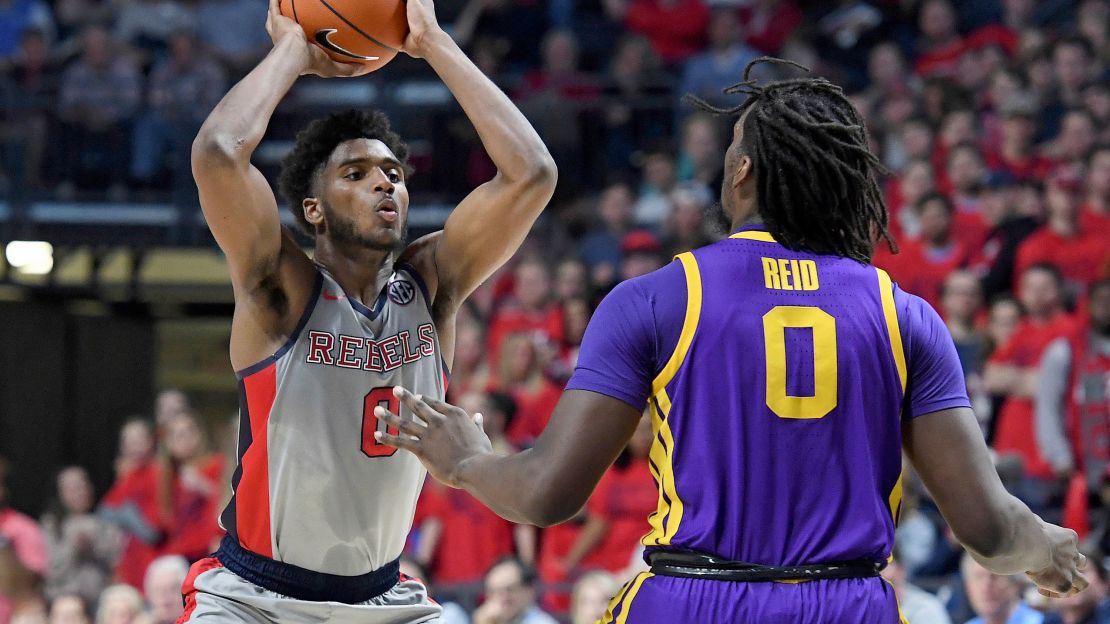
University leaders were more resistant to demands they take down a 30-foot Confederate monument that has stood prominently on campus since 1906, but the statue was relocated this month. A new controversy sprouted when plans surfaced for a privately funded facelift for the statue’s new location that will cost up to $1.2 million. Opponents accuse the university of building a shrine to the Lost Cause of the Confederacy.
“It feels like you’re in the Upside Down. Everywhere else in the country these statues are coming down,” UM associate history professor Anne Twitty said. “You feel like you’re fighting the battle of 15, 20 years ago.”
Thinking back on the struggles she’s seen since joining the faculty in 2010, she said, “The battle over Ole Miss will be particularly hot.”
Last month, Blake Hinson, a guard on UM’s basketball team, put the school’s ties to the Confederacy in the headlines by transferring to Iowa State.
“I’m proud not to represent that flag anymore and to not be associated with anything representing the Confederacy,” the Florida native told The Daytona Beach News-Journal in June. Iowa State would not make Hinson available for an interview.
Also last month, the university esports team dropped all references to “Rebels.”
The dangerous messaging at play
Jack Carey received his master’s and doctorate at the university. He devoted a section of his dissertation to “the invention of Ole Miss” and is writing a book, “Jim Crow U.,” about flagship Southern universities during segregation.
The story of Ole Miss’ origin, he said, is but one example of the school’s deliberate efforts to hitch its image to the Old South and Confederacy. In the late 19th and early 20th centuries – as old Confederates convulsed at the notion of civil rights and crafted Jim Crow laws to strip Black people of rights – the university covered the campus with Old South iconography, Carey and others say.
“There’s really no ambiguity about what (Elma Meek’s) tapping into: a romanticized vision of the Old South and slavery,” said Carey, a University of Alabama instructor of American studies. “A lot of people don’t think that much about it, which makes it all the more important to acknowledge the origin. It’s quite a bit to try to explain away or rationalize.”
Aside from sending an unwelcoming message to more than a third of the state’s residents, who are Black – along with those who feel those residents’ lives and feelings matter – retaining the nickname poses deeper dangers in its messaging, he said:
- “It requires imagining enslaved people felt affection or endearment toward slaveholders.”
- It props up the myth of the White savior, a paternalistic figure who was necessary to civilize the Black race.
- And it ignores the brutality, violence and force necessary to maintain slavery.
By romanticizing slavery, Carey said, an institution doesn’t have to confront it.
“To speak honestly about the origin requires a pretty serious reckoning not just with the name but also the institution’s identity,” Carey said.
By fighting to keep its name and other holdovers of the Confederacy, he said, the university sends a strong message to prospective Blackstudents: “Go somewhere else.”
“That is not the way that a flagship state university should be imagining itself,” Carey said. “That’s really exclusionary in terms of who that university would welcome, and its commitment to academic freedom and diversity of thought.”
‘I think rebellion is a good thing’
Not everyone concurs with Carey. On Facebook and in interviews, many students and alumni – and some would argue most – feel the same way the university does about keeping Ole Miss. Despite their alignment with university leaders, they worry because the school has defended traditions like Colonel Reb and “Dixie” in the past, only to relent under pressure, said Howie Morgan, a 2000 graduate and political consultant.
Morgan co-founded the Colonel Reb Foundation in 2003 to honor the wishes of the 94% of students who voted that year to keep the colonel, he said.
“I think the problem that anyone’s going to have in the current climate is the University of Mississippi, through its leadership over the last several decades, has not been honest with the students, alumni and fan base in their argument to change the symbols,” he said.
Growing up with Southern parents in Vicksburg, “I didn’t know what racism was,” he said. The Confederate flag is just a symbol – “the Cowboy hat of the South” – made popular by Lynyrd Skynyrd and “The Dukes of Hazzard,” he said.
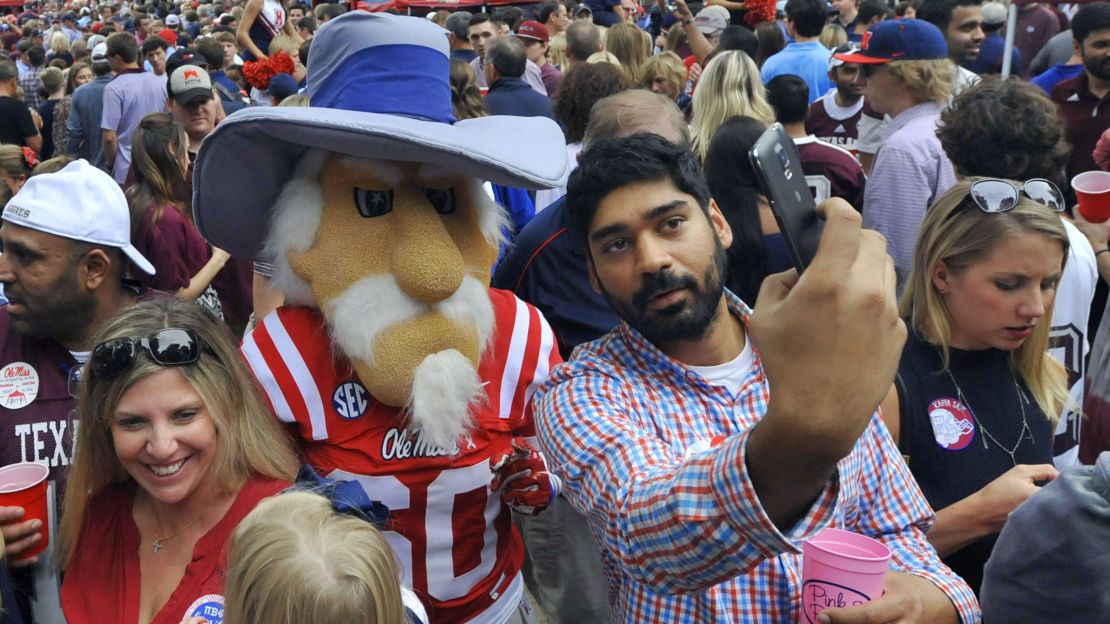
That the Ku Klux Klan and other hatemongers co-opted the flag after the Civil War is just an example of groups stealing symbols, he said: “The Klan also used an American flag. The Nazis also stole a Christian symbol.”
He frowns on efforts to change Ole Miss or Rebels, echoing his alma mater’s assertion that they’ve taken on new meanings. Those who fought for suffrage and to end child labor were rebels, he said.
“I think rebellion is a good thing,” he said.
He worries outside pressure is pushing administrators to “change from a niche market into a more bland university so we would blend in with all the other universities across the United States.”
‘We’re destined to repeat the bad’
For senior Lauren Moses, a columnist for the school paper, the controversial symbols, along with Ole Miss and Rebels, are not honors. They’re reminders, she said.
“Things that happened around the Civil War, we remember those things. We don’t celebrate them, but we remember. I don’t think the majority of students who utter the words support neo-Nazis or racism,” she said. “For me, Ole Miss means both the good parts and the bad parts of our history.”
When graduate student Zach Borenstein wrote a February column urging students to stop saying Ole Miss (he’d be charged months later with vandalizing the Confederate statue), Moses fired back with a litany of traditions, including James Meredith integrating the school in 1962, that she associated with Ole Miss.
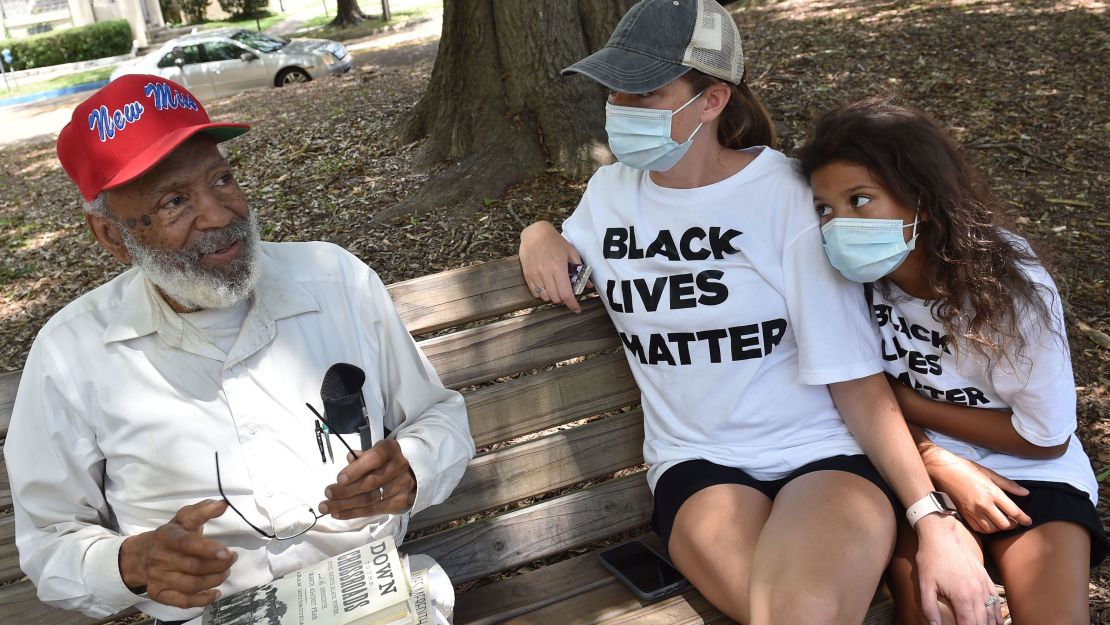
“From changing the school mascot to governing bodies voting to move the Confederate statue to contextualizing many buildings on campus, Ole Miss has lost its identity,” the 21-year-old wrote. “Those who do not take the time to understand the importance of tradition may never know the beauty of our campus.”
She sees it as a microcosm of what’s happening across the nation, where historic figures such as Christopher Columbus and Thomas Jefferson are removed from the context of their history and unfairly measured by today’s norms and moral codes, she said.
“I see a sort of nihilism. We’re trying to whitewash our history and get rid of everything that’s bad,” she told CNN. “I think that’s dangerous for society and dangerous for Ole Miss specifically. We’re destined to repeat the bad.”
‘If they’re not willing to unlearn, we’re at a standstill’
Carl Tart, 22, the university’s first homecoming king, faced backlash when he told his family he was attending UM. Relatives disapproved of its racist and Confederate history, he said, but he had attended an all-Black high school in Yazoo City.
“I knew the world wasn’t going to be all Black,” he said. “I wanted to learn how to navigate the world with people who are different from me.”
Once on campus, he’d experience a range of racism. He shared anecdotes about hateful messages Facebook and screen grabs of death threats on Snapchat targeting Black students. Other bigotry he experienced was more Archie Bunker than Bull Connor, he said.
White students at pep rallies couldn’t tell star wide receiver D.K. Metcalf from other Black players, he said. They’d blurt out the n-word while singing along with rap music in local bars. At tailgates in The Grove, Tart and other Black students had to check each other’s backs to make sure no one put “Our State Flag” stickers on them. Unwilling to study in halls named for racists (the contextualization plaques “didn’t go far enough”), Tart did most of his schoolwork at home, he said.
Despite his stature, 6-foot-5 and almost 300 pounds, he found himself anxious when a vehicle pulled alongside him bearing the Confederate flag.
“I tense up because I have no idea if these people are about to target me. I have no clue what’s going to happen from this point forward,” he said.
On June 19, he issued an ultimatum: If his alma mater breaks ground on a shrine glorifying the relocated Confederate statue, count him out of any marketing initiatives expected of him as homecoming king.
“It’s time for change and change is happening whether people like it or not. We have to start leaving behind these old traditions and these old prejudiced ways and bring positivity to the change,” he said.
Now a graduate student at Louisiana State, Tart bristles at the idea Ole Miss can be “rebranded” with new meaning. He doesn’t understand how university leaders can continue to justify its use, he said.
“We’re expected to basically assimilate into a culture that’s not ours. You can teach a person so many things, but if they’re not willing to unlearn, we’re at a standstill,” he said. “It’s not OK you’re allowing Black students to live in fear.”
A conflicted Black student experience
Arielle Hudson, a Rhodes scholar and outgoing president of the Black Student Union, which has been demanding the removal of UM’s Confederate tributes for decades, says changing Ole Miss is trickier than altering the state flag or moving a statue.
“The biggest problem is Ole Miss is a brand. It’s making money,” she said.
The 22-year-old graduated in May and is destined for the other Oxford, in England, come fall, but she has made the drive from her hometown, Tunica, for campus protests. The statue has spawned a few.

When Borenstein was charged with vandalizing the statue, she raised his bail money because “his stance was strong. I wanted to help him out.” (Borenstein’s case remains open, according to the Lafayette County Justice Court.)
As a young orientation ambassador, Hudson recalls debunking “wild” rumors from prospective Black students – no, the KKK doesn’t live on campus; no, they’re not still lynching people in Oxford – while affirming other disturbing elements of the university’s history.
“Some of this stuff happened, but that doesn’t mean you don’t belong here,” she’d tell them.
She occasionally wears Ole Miss apparel but takes a harder line on Rebels gear. Her aunt won’t wear any of it, she said. Depending on Hudson’s audience, Ole Miss might slip out in conversation, but never in interviews or academic settings. Still, Hudson thinks the sobriquet sends a negative message, she said.
“I think it definitely means we haven’t come to terms with all the history of the University of Mississippi and our role with slavery, with Jim Crow, within the Reconstruction era,” she said.
Honesty and transparency are often missing from the debate, she said, echoing a complaint heard from both sides. Administrators too often announce a victory, only to hatch secret plans “to glorify Lost Cause mythology rather than contextualize Civil War history,” which is what Hudson believes happened with the statue, she said.
Real dialogue means listening to all sides and using opposing arguments to hone her own, she said.

“You have to get more people engaged with that history and understanding that history,” she said. “Education pulls people to your side.”
Administrators also do the right things for the wrong reasons, she and other students and faculty complained.
The stadium stick ban was purportedly about safety, rather than denouncing the Confederate flag. Ditching “Dixie” and Colonel Reb were couched as efforts to make pregame more inclusive. The new names for buildings and the statue relocation came after a consulting firm said such honors hurt the school’s reputation.
“That’s not the only problem or the main problem,” she said, explaining that just once she’d like hear university leaders say, “No matter how much it costs or how much we lose, it’s wrong and we’re going to take it down.”









